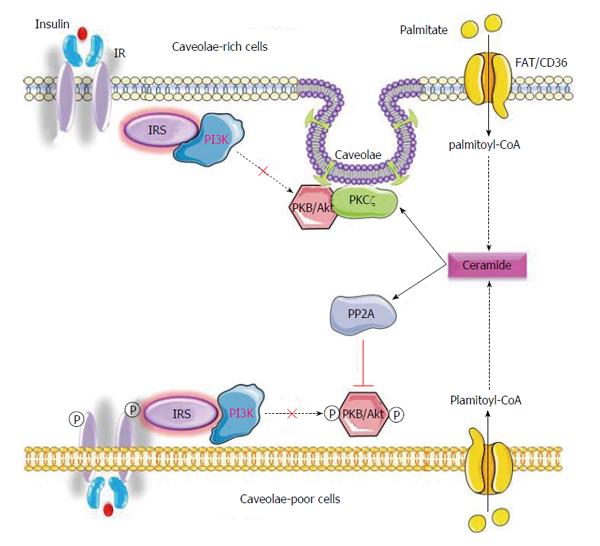Copyright
©2014 Baishideng Publishing Group Inc.
World J Diabetes. Jun 15, 2014; 5(3): 244-257
Published online Jun 15, 2014. doi: 10.4239/wjd.v5.i3.244
Published online Jun 15, 2014. doi: 10.4239/wjd.v5.i3.244
Figure 3 Ceramide inhibits insulin-induced activation of protein kinase B via two distinct mechanisms.
Ceramide inhibits insulin-activation of protein kinase B (PKB/Akt) either by activating atypical PKC (PKCζ) or by stimulating the phosphatase PP2A. Activation of either mechanism depends on plasma membrane enrichment with caveolae: (1) Ceramide-activated PKCζ phosphorylates the PH domain of PKB/Akt on Thr/Ser34, changing the recognition site of PKB/Akt, and disabling its activation by PIP3; (2) PP2A dephosphorylates PKB/Akt, inhibiting its kinase activity. IR: Insulin receptor; IRS: IR substrates; PI3K: Phosphoinositide-3-kinase; PP2A: Protein phosphatase 2A.
- Citation: Hage Hassan R, Bourron O, Hajduch E. Defect of insulin signal in peripheral tissues: Important role of ceramide. World J Diabetes 2014; 5(3): 244-257
- URL: https://www.wjgnet.com/1948-9358/full/v5/i3/244.htm
- DOI: https://dx.doi.org/10.4239/wjd.v5.i3.244









